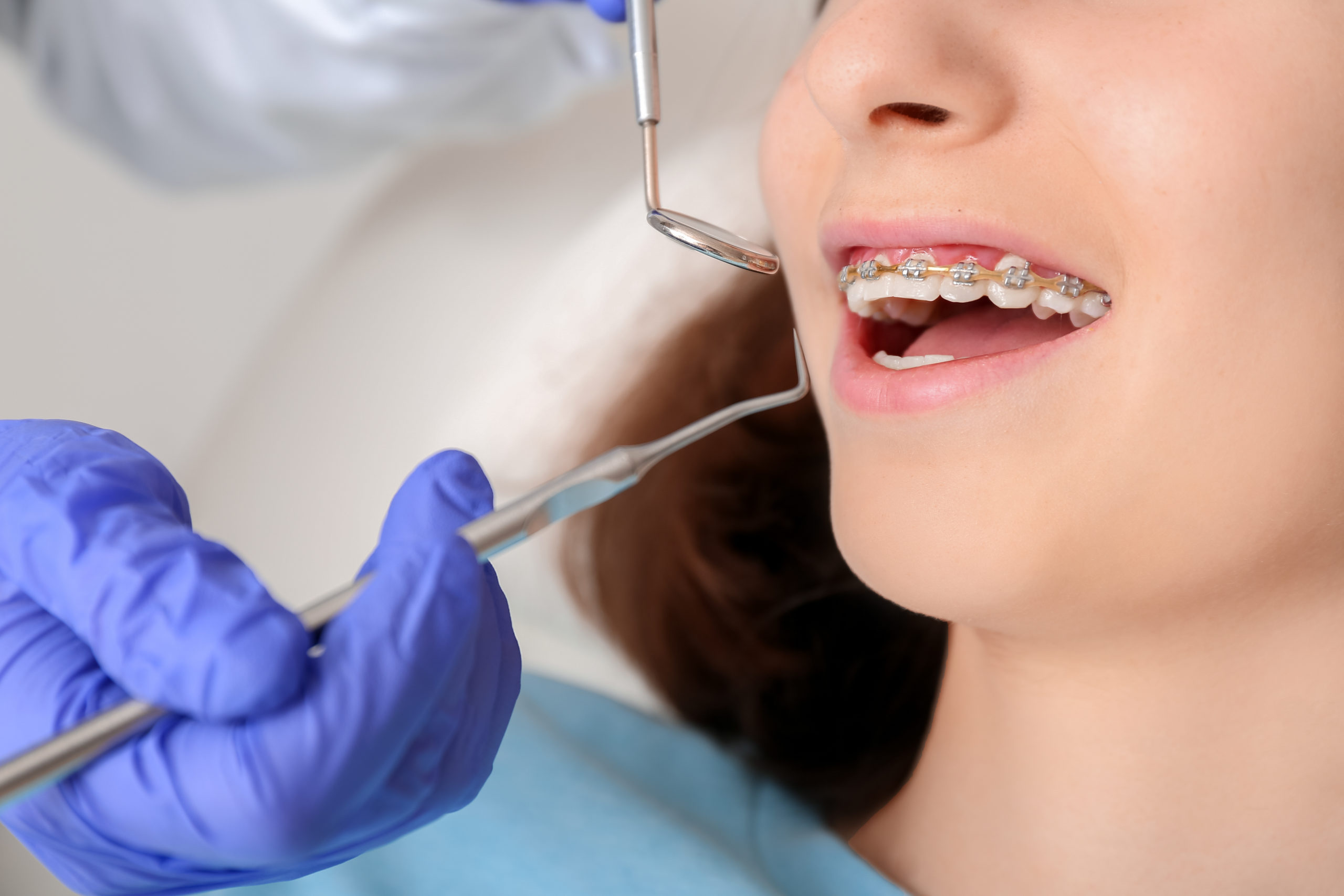Locating the Right Cumming Orthodontist for Your Braces and Aligners Needs
Locating the Right Cumming Orthodontist for Your Braces and Aligners Needs
Blog Article
Comprehensive Guide to Orthodontics Procedures for Remedying Dental Misalignments
In the realm of orthodontics, the journey to attaining a completely lined up smile involves a myriad of treatments customized to remedy dental misalignments. From conventional braces to unseen aligners and also medical alternatives, the area of orthodontics supplies a variety of services to resolve varying degrees of oral abnormalities. Recognizing the ins and outs of each procedure, including their mechanisms, benefits, and potential drawbacks, is vital in making educated decisions about one's orthodontic therapy. As we browse with the thorough guide to orthodontic treatments for correcting dental misalignments, the complex details of each approach will certainly unfold, dropping light on the course toward a functional and unified dental alignment.
Orthodontic Procedures Summary

Normal modifications and tracking are important parts of orthodontic treatment to ensure progression is on track and to make any kind of needed modifications along the way. By going through orthodontic procedures, individuals can not only accomplish a straighter smile however additionally improve their general dental health and function.
Typical Braces: Just How They Function
When taking into consideration orthodontic therapies for dental misalignments, traditional dental braces stand out as a reliable technique for dealing with teeth placing. Typical dental braces are composed of brackets, cables, and bands that work with each other to use continual stress on the teeth, slowly moving them into the wanted placement.
One secret aspect of just how standard braces work is the process of bone makeover. As stress is put on the teeth with the braces, the bone surrounding the teeth is improved to support the brand-new tooth positions. This remodeling is vital for the long-term security of the fixed placement. People will require routine adjustments at the orthodontist's workplace to make sure the dental braces continue to apply the right pressure for efficient teeth movement.
Unseen Aligners: Advantages And Disadvantages
These clear, tailor-made trays are practically undetectable when used, making them an attractive alternative for people seeking a much more aesthetically pleasing orthodontic treatment. People can remove the aligners prior to eating or brushing their teeth, reducing the danger of food obtaining stuck in the device and streamlining the cleansing procedure.

Surgical Orthodontic Options
Surgical treatments in orthodontics present feasible choices for addressing complicated dental imbalances that may not be properly solved through standard orthodontic therapies. While traditional dental braces and unnoticeable aligners can correct numerous orthodontic issues, particular cases need medical intervention to accomplish optimum results. Surgical orthodontic alternatives are usually suggested for extreme malocclusions, significant jaw inconsistencies, and instances where the underlying bone structure needs alteration to accomplish correct alignment.
One typical medical orthodontic treatment is orthognathic surgery, which includes rearranging the jaws to remedy functional problems such as trouble speaking or chewing. This surgical visite site procedure is often performed in partnership with an orthodontist that aids straighten the teeth prior to and after the procedure. Surgical orthodontics may also involve treatments to expose affected teeth, eliminate excess periodontal cells, or improve the jawbone to create a more unified face profile.
Before considering surgical orthodontic options, clients undertake a thorough examination to figure out the requirement and potential benefits of such interventions. orthodontics. While surgical procedure might seem daunting, it can dramatically improve both the function and aesthetic appeals of the smile in instances where standard orthodontic therapies fail
Retainers and Post-Treatment Treatment

Failure to abide with post-treatment care guidelines can result in relapse, where the teeth progressively move back in the direction of their original settings. Regular retainer wear, great oral health, and normal dental examinations are essential for preserving the outcomes achieved with orthodontic surgical procedure and making sure the long-term security of the fixed oral alignment.
Final Thought
Finally, orthodontic procedures provide numerous alternatives for dealing with oral imbalances. Standard dental braces utilize steel brackets and cables to shift teeth into proper placement. Unnoticeable aligners provide a more discreet choice yet might not appropriate for all cases. Surgical orthodontic alternatives are readily available for a lot more extreme imbalances. Retainers are typically made use of post-treatment to keep the new placement. On the whole, orthodontic procedures can efficiently enhance oral wellness and visual look.
As we navigate with the detailed overview to orthodontic treatments for correcting oral imbalances, the intricate details of each method will certainly unfold, shedding light on the course towards navigate to this website a practical and harmonious oral placement. - braces
One of the most typical orthodontic treatments is the usage of dental braces, which are composed of metal brackets and cords that use gentle pressure to gradually move teeth into the desired placement.When thinking about orthodontic treatments for oral misalignments, conventional dental braces stand out as a reliable technique for fixing teeth positioning. In addition, invisible aligners might not be suitable for complex orthodontic issues that call for even more considerable teeth motion, as they are commonly suggested for mild to moderate cases. Retainers are personalized orthodontic gadgets designed to hold teeth in their fixed settings after the conclusion of orthodontic treatment.
Report this page